- Home
- William Shakespeare
As You Like It (Folger Shakespeare Library) Page 13
As You Like It (Folger Shakespeare Library) Read online
Page 13
Charles Kean's productions were noted for the historical accuracy of their lavish pictorial stagings. His 1851 As You Like It at the Princess's Theatre included "avenues of trees, rustic bridges, and running brooks."16 Kean himself played Jaques, with his wife (Ellen Tree) as Rosalind. It was her performance in an earlier production at the Park Theater, New York, in 1836 that was responsible for the play's popularity in America. The greatest American actress of the period, Charlotte Cushman, had played Rosalind in London to considerable acclaim. Cushman had famously played Romeo to her sister's Juliet, and her performance of Rosalind was felt to be especially convincing in the part of Ganymede: "the transformation from woman to man had the same effect on her as on the famed Tiresias ... Her mind became masculine as well as her outward semblance."17 Cushman went on to reprise the role successfully in New York in 1849.
Helena Modjeska played Rosalind in another critically and financially successful production at Booth's Theater, New York, in 1882. The distinguished Polish-born actress was principally known, like Helen Faucit, for playing tragic parts and, in the same way as Faucit, she made a distinction between the Rosalind of Act 1 and her subsequent liberation in the Forest of Arden:
Of these opening scenes, quite without significance to an actress without imagination, Mme. Modjeska makes a little domestic drama ... With her entry among the green boles of Arden the pathos of her part is ended. Thenceforward all is comedy ... And Modjeska is singularly brilliant. She sparkles with merriment. She throws off epigrams like a spray of diamonds. She flirts and frolics, prattles and plays. Never under the shade of these melancholy boughs had roamed so gay a creature. Never had these foresters, fleeting the time so carelessly, as they did in the golden world, had among them a youth so trim in limb, so dapper in bearing, so merry in humour.18
The London revival at the St. James's Theatre in 1885 by John Hare and W. H. Kendal again emphasized spectacle, with a set which included "cascading water, ferns in a forested glade, 'sunlight effects' produced by electric lighting, and stage grass manufactured from dyed feathers sewn into mats."19 "The first act was played on the terraced garden of a medieval chateau"20 in costumes based on Froissart's chronicles. While some admired the lavish sets and costumes, most critics agreed with the Theatre's assessment that its appeal was to those "devoid of imaginative and poetic ideas ... To the true lovers of Shakespeare ... the play is the first thing to be considered; secondarily, the manner in which it is caparisoned and bedecked."21
The quest for authenticity and realist staging continued in Barry Sullivan's 1879 production at the Stratford Festival. The American actress Mary Anderson, who played Rosalind in the inaugural production of the Shakespeare Memorial Theatre, later recalled how:
The stage was decorated with blossoms from Shakespeare's garden; the flowers used by Rosalind and Celia, as well as the turnip gnawed by Audrey, had been plucked near Ann Hathaway's cottage; the deer carried across the stage in the hunting chorus had been shot in Charl[e]cote Park for the occasion--so I was told--by one of the Lacys.22
Augustin Daly's productions were also famous for spectacle and display. His As You Like It, which opened in New York in 1889 before transferring to London and then touring America, was one of the most successful. The set made "[e]specially effective use" of "a revolving panorama of forest, which not only presents a variety of charming pictures, but conveys an impression of great spaces, and suggests in a striking manner the freedom and seclusion of the life in Arden."23 However, the show's greatest asset was its leading lady:
Ada Rehan played Rosalind in a style peculiarly her own. It was not Shakespearean, and it was not poetic to any marked degree, but it was delightfully animated, piquant and feminine ... she was a most attractive figure in her doublet and hose, and her love-scenes with Orlando were full of roguish humor and a very pretty audacity, tempered by little touches of womanly tenderness and apprehension, as in the episode of the bloody napkin. There can be no doubt that she won the warm favor of her audience.24
She even managed to win the approval of George Bernard Shaw, one of Daly's severest critics.25 Marshall argues that her "restless movement registered a vigorous style of feminine behaviour--a precursor of the New Woman."26
1. Ada Rehan as Rosalind in 1889: "a precursor of the New Woman."
Daly's success caused Henry Irving to shelve plans for a production at the Lyceum, so Rosalind was one of the few major female Shakespearean characters Ellen Terry never had an opportunity of playing.27 Seeing the play in terms of lavish theatrical spectacle was still evident in Oscar Ashe's production at His Majesty's in 1907, which featured "two thousand pots of ferns" plus "large clumps of bamboo" and "cartloads of last autumn's leaves."28 Ashe himself played Jaques, with his wife, Lily Brayton, as a more "straightforward"29 Rosalind than usual. Meanwhile, at Stratford "productions entered a kind of time warp. A popular favourite, the play was staged sixteen times between 1894 and 1915, usually under the direction of Frank Benson."30 Despite the fact that Benson used a fuller text with fewer cuts and alterations, his productions had come to seem conventional:
As the play most emphatically linked to the Stratford area, As You Like It became especially encrusted with tradition, of which the stuffed stag was emblematic: it was not seen as an increasingly moth-eaten prop but as a relic linked to Shakespeare himself.31
This changed with Nigel Playfair's "experimental" production of 1919 when the theater reopened after the First World War. Playfair had been influenced by the work of Harley Granville-Barker, who had worked with William Poel and the Elizabethan Stage Society and their attempts to reproduce the original stagings of Shakespeare's plays. Playfair used an uncut text with only one interval and a simple set and costumes on a limited budget and a very tight schedule. Critical response was positive:
The basis of the staging is obviously some illuminated manuscript of the early fifteenth century, perhaps not altogether unaffected by the Omega style in drawing. The forest, for instance, is ruthlessly simplified, while the costumes are all 15th century, and very brilliant and exciting they are, even in the dim lighting affected by the modern stage artist. Mr C. Lovat Fraser, who has designed it all, has, at any rate, vigour, and his daring mixture of styles certainly throws up the player against the scene.32
Rosalind was especially well received: "Miss Athene Seyler takes the part at a tremendous rate, but the delicacy and perfection of her technique wonderfully brings out the invincible gaiety and tenderness which lie in Rosalind."33 But it was too much for the conservative local populace, as Nigel Playfair reported:
When I came into my hotel ... people turned their backs and got up and walked from the room ... the rest of the cast fared little better; they were cut and cold-shouldered everywhere. When Lovat Fraser was walking in the street, a woman came up to him and shook her fist in his face. 'Young man,' she said impressively, 'how dare you meddle with our Shakespeare?'34
Edith Evans' Rosalind was the highlight of early twentieth-century productions from the Old Vic in 1926 to the New Theatre in 1937; as the critic J. C. Trewin put it in his review of the latter with Michael Redgrave as Orlando, she was "Rosalind herself."35 Katharine Hepburn played Rosalind in Michael Benthall's production at New York's Cort Theater in 1950, but despite its successful run most critics agreed with Brooks Atkinson that "There is too much Yankee in Miss Hepburn for Shakespeare's glades and lyric fancies" and she was ill-served by the "literal and ponderous" production style.36
Glen Byam Shaw staged the play at Stratford in 1952 and 1957. The key on each occasion was the passing of the seasons from a wintry opening to the gradual arrival of spring. The London Times observed: "It is hard to imagine Touchstone consenting to set out for the forest before spring had come"; it also necessitated "the Duke and his fellow exiles enjoying an al fresco meal of fruit in the snow" with "only their costumes, which are in the elegant fashion of the French court of Louis XVI, all silk and lace, to keep them warm."37 Nevertheless, critics were won over, and Margaret Leight
on's Rosalind and Laurence Harvey's Orlando were generally approved. Peggy Ashcroft, who had not succeeded in Harcourt Williams' experimental 1932 production at the Old Vic, was described in 1957 as "quiveringly alive ... an exquisitely light-hearted performance,"38 while another critic thought "It would be difficult to find a better Orlando for this Rosalind than Richard Johnson. Here is a hero of manly charm, as handsome as he is sensitive, and surely irresistible to any woman of discernment."39 Wendy Toye "breathed some life into what had become a moribund play"40 at the Old Vic two years later, with strong performances by Barbara Jefford as Rosalind, Maggie Smith as Celia, and Judi Dench as Phoebe. But the most successful and influential production of the mid-twentieth century was Michael Elliott's for the Royal Shakespeare Company in 1961 with Vanessa Redgrave as Rosalind, which is discussed in detail below.
Overseas productions less wedded to the English pastoral tradition were often more ambitiously experimental. Jacques Copeau's at the Theatre de l'Atelier in Paris in 1934 was marked by "[a]rchitectural decor and intellectual sophistication";41 an Italian version of the production was staged in the Boboli Gardens in 1937. Moscow's Maria Yermolova Theatre mounted a 1940 production with a "Robin Hood theme" in which "pastoral received less emphasis than social critique."42 The Italian filmmaker Luchino Visconti's 1948 production at the Teatro Eliseo in Rome featured surrealist designs by Salvador Dali. In 1954 Hans Schalla directed a production for the German Shakespeare Society with Touchstone as "master of ceremonies." Liviu Ciulei's "famously avant-garde production at Bucharest's Teatrul Bulandra in 1961 ... emphasized ... fantasy and theatricality."43
2. Glen Byam Shaw production, 1957, with Peggy Ashcroft as Rosalind and Richard Johnson as Orlando--"A hero of manly charm, as handsome as he is sensitive, and surely irresistible to any woman of discernment."
The work of Polish academic Jan Kott's Shakespeare, Our Contemporary (1964) influenced European productions such as Roberto Ciulli's "coldly clinical staging" in Cologne in 1974 in which "love could not operate, and was not meant to".44 Romanian director Petrica Ionescu's 1976 production at Bochum featured an all-male cast in a set "suggesting a vandalized slaughterhouse or a war-damaged factory, with burst pipes, torn-off tiles and heaps of rubble."45 Marshall argues that the most successful experiment was Peter Stein's 1977 Berlin production, which "discovered a way to expose the pastoral's political charge without destroying the structure of fantasy."46 It was staged before the fall of the Berlin Wall, and "attending the play required audiences to venture outside the city, lending peculiar resonance for a Berlin audience surrounded by the GDR" involving an hour-long bus drive to the CCC Film Studios, where the first act was staged, after which the audience were "actually hounded from the hall by the sound of barking dogs playing over the sound system." There was then a fifteen-minute walk to "Arden" which "passed through a dark, gusty maze, with dangling vines, dripping water, and occasional surprises such as a wild bear."47
The changing cultural climate of the 1960s had introduced radical ideas about sexuality and the social construction of gender and a desire to explore the dark side of Shakespeare's comedies. Clifford Williams' 1967 all-male National Theatre production at the Old Vic provoked much critical comment. Despite Williams' disclaimer, most saw the influence of Kott's ideas on the production. Opinions were divided about "Ralph Koltai's plastic decor--dangling transparent tubes and dappled overhead cut-outs, and a variety of silver boots, PVC macs, and tattered regimentals."48 Williams was on record as saying "underlying all the love scenes between Orlando and Rosalind there is an incredible incandescent purity."49 Most critics however thought the production sexless; more than one described Ronald Pickup playing Rosalind as "beaky," "long-legged," and "nonerotic,"50 although others recognized how his performance grew:
toward the end, Pickup softens the queerness into something quite close to girlhood. By the time Shakespeare's touching quartet arrives, he can read Rosalind's "I for no woman" with a double meaning both effective and moving. And from then to the end he is wonderful, reading the epilogue as it had never been read before.51
The cast included Anthony Hopkins as Audrey "(the funniest of all performances)"52 and Robert Stephens as Jaques. Buzz Goodbody's 1973 RSC production was a deliberate attempt to "win the play back for women."53
Conventional productions built around a star actress were still current; Maggie Smith's Rosalind formed "the comic mainspring of the production"54 in Robin Phillips' production at the Stratford Festival Ontario in 1977. John Dexter, who had walked out on the National's all-male version, directed their next in 1979 based on anthropologist J. G. Frazer's The Golden Bough and dominated by a Tree of Life on which was strewn flowers and a red garland of the innards from the slaughtered deer of Act 4. William was smeared with the deer's blood and crowned with its antlers, while
other actors gathered round him wearing beautifully expressive deer masks. In the finale, the stage was completely surrounded by these 'deer', with William as an antlered Hymen, naked except for fronds of leaves--a rustic god with whom Rosalind had joined forces to provide the 'rites' for her wedding.55
Productions since then have veered between radical explorations of the play's politics, gender, and sexuality, and a view of it as a quintessentially English romp through the countryside. The first of many open-air performances was staged at Coombe House, Kingston-upon-Thames, in June 1885, and it was performed in the 1933 inaugural season of the Open Air Theatre in London's Regent's Park. It remains a popular choice for outdoor venues with local groups. The possibilities such outdoor productions offer, particularly their democratic potential, have been capitalized on in America, notably in Joseph Papp's 1973 production at the Delacorte Theater in New York's Central Park, which featured pop singer Meat Loaf as Amiens and film star Raul Julia as Orlando.56 Rural Australia was the setting for Sydney's Nimrod Theatre production in 1983 and an "aboriginal 'second' shadowed Charles in the wrestling match; 'topsy-haired' Audrey too was 'part Negro or aboriginal or Islander.' "57
In Cheek by Jowl's 1991 production the director, Declan Donnellan, claimed that the "all-male cast forces the audience to tread a tightrope of willed belief, a quintessentially theatrical act of faith."58 City Limits thought he used the actors "to polymorphously perverse and liberating effect: every tug of affection, in any direction, is unloosed to be played explicitly."59 The production was well received, although not all critics found its exploration of sexual ambiguity liberating. The performance of the black actor Adrian Lester as Rosalind was subtly playful:
The extraordinary thing about Adrian Lester was that, with his beautiful voice and grace of movement, when he played the female Rosalind playing at being the male Ganymede he seemed more like a woman playing a man than a man playing a woman. And when he played at Rosalind playing Ganymede playing Rosalind, one simply gave up trying to work out in one's mind whether one thought he was a woman playing a man playing a woman or a man playing a woman playing a man playing a woman.60
After her Oscar for Shakespeare in Love, in which she briefly played both Romeo and Juliet, Gwyneth Paltrow successfully took on Rosalind in Barry Edelstein's 1999 production at the Williamstown Theater "as an ungainly youth in knickers and spectacles, his peaked cap worn backward on the head, like an aw-shucks version of Huckleberry Finn."61 In Lucy Bailey's 1999 promenade-type production at the Globe Theatre, some of the action was played in the yard among spectators who "needed streetwise skills to leap backward on a surface littered with discarded soda cans, as the wicked Duke's followers strong-armed them out of the way to make room for the wrestling match at ground level."62 It was nevertheless "a friendly and satisfying production" in which the "one scary element" was Rosalind herself, "in an unusual and fascinating performance by Anastasia Hille, who apparently wanted to turn the play into something more complex, more female-oriented," in a production that "otherwise took the title of the play as a key to its interpretation."63
The opportunities that film offers for realism, including Orlando's
fight with the lion, were quickly recognized, and two early silent film versions were made by Kalem (1908) and Vitagraph (1912). Paul Czinner's 1936 film, with the distinguished Austrian actress Elisabeth Bergner and featuring a young Laurence Olivier as Orlando, blended "realism and fantasy in odd and charming ways"64 to a score by William Walton. In her 1992 film, Christine Edzard "sought to evoke the spirit of Arden in a different place: the urban wasteland of London's docksides."65 Critics were divided: one argued that "the film can only be fully appreciated when assessed in its own avant-garde terms as a postmodern experiment attendant upon, and sensitive to, a fin-de-siecle moment,"66 while others regretted its "puritanical denial of visual pleasure."67 Despite praising the non-theatrical doubling of Orlando and Oliver, Marshall concludes that "The disjunction between the Shakespearean language and the modern setting creates more strain than the rejection of pastoral convention."68 Several stage versions have been recorded for television, including an adaptation of the 1946 Regent's Park staging and the RSC's 1953 version with Margaret Leighton and Laurence Harvey, as well as Michael Elliott's 1961 production with Vanessa Redgrave. The BBC Shakespeare version directed by Basil Coleman was set at Glamis Castle in Scotland, but despite Helen Mirren's "intelligent Rosalind," the naturalistic scenery dominated the small screen.
AT THE RSC
"Well, this is the Forest of Arden"
Shakespeare's fantasy is a device to put us off our guard so that when he makes one of his sudden dives into truth our unpreparedness renders the unexpected vision all the more striking. In Shakespeare, reality and artifice are not two opposing modes but "sphere-born, harmonious sisters," indispensable the one to the other.69
One of the major difficulties with As You Like It in performance seems to be the successful depiction of real feeling in an environment based on an artificial literary construct, the pastoral--melding naturalism with artificiality and making it believable.

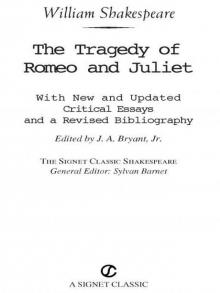 Romeo and Juliet
Romeo and Juliet As You Like It (Folger Shakespeare Library)
As You Like It (Folger Shakespeare Library)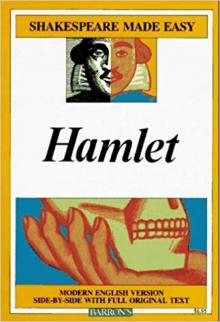 Hamlet
Hamlet Richard II (Folger Shakespeare Library)
Richard II (Folger Shakespeare Library)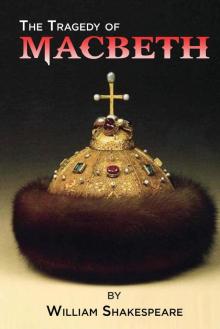 Macbeth
Macbeth Henry V
Henry V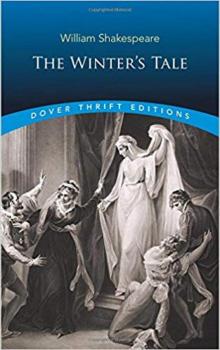 The Winter's Tale
The Winter's Tale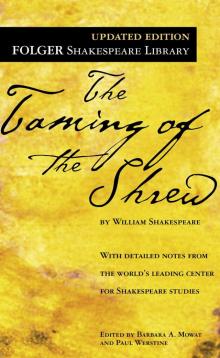 The Taming of the Shrew
The Taming of the Shrew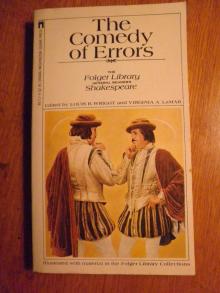 The Comedy of Errors
The Comedy of Errors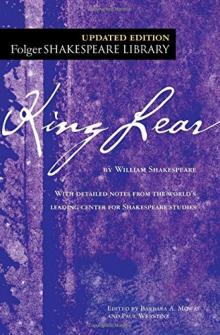 King Lear (Folger Shakespeare Library)
King Lear (Folger Shakespeare Library)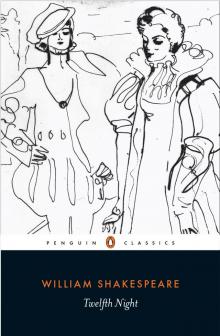 Twelfth Night
Twelfth Night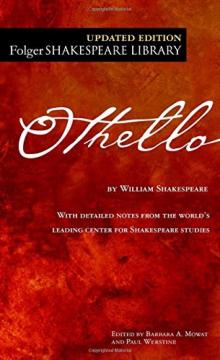 Othello
Othello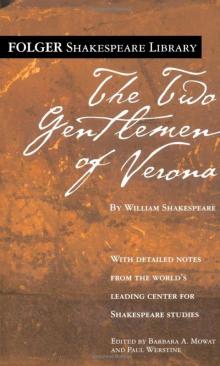 The Two Gentlemen of Verona
The Two Gentlemen of Verona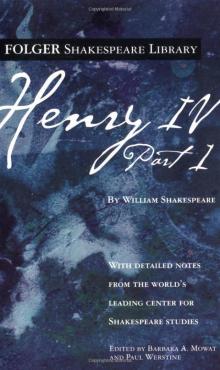 Henry IV, Part 1 (Folger Shakespeare Library)
Henry IV, Part 1 (Folger Shakespeare Library) King John/Henry VIII (Signet Classics)
King John/Henry VIII (Signet Classics)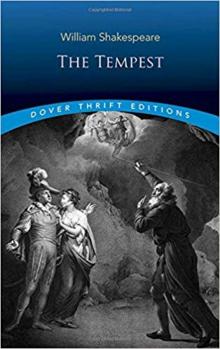 The Tempest
The Tempest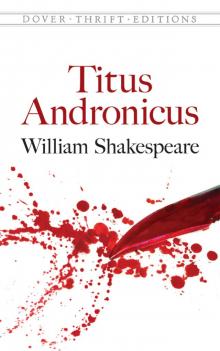 Titus Andronicus (Dover Publications)
Titus Andronicus (Dover Publications)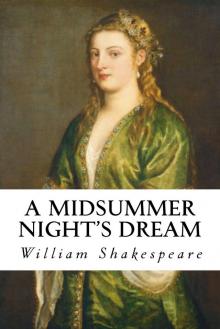 A Midsummer Night's Dream
A Midsummer Night's Dream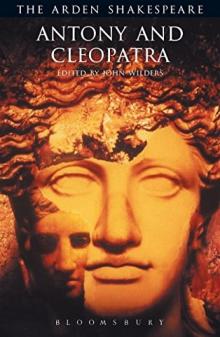 Antony and Cleopatra (Arden Shakespeare: Third Series)
Antony and Cleopatra (Arden Shakespeare: Third Series)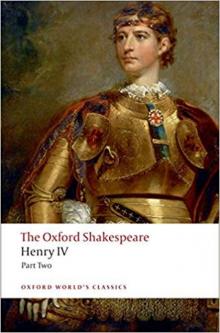 The Oxford Shakespeare: Henry IV, Part 2 (Oxford World's Classics)
The Oxford Shakespeare: Henry IV, Part 2 (Oxford World's Classics)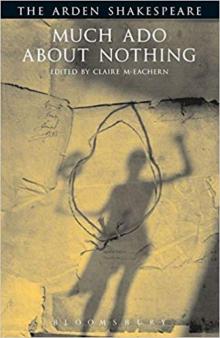 Much Ado About Nothing (Arden Shakespeare: Third Series)
Much Ado About Nothing (Arden Shakespeare: Third Series)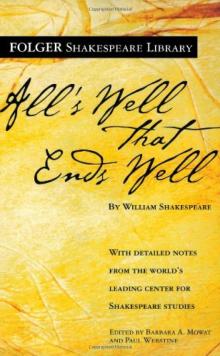 All's Well That Ends Well
All's Well That Ends Well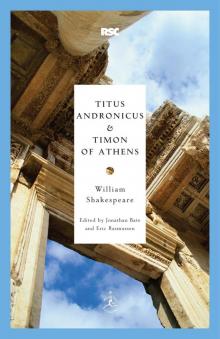 Titus Andronicus & Timon of Athens
Titus Andronicus & Timon of Athens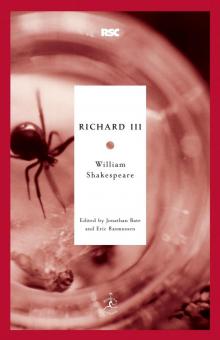 Richard III (Modern Library Classics)
Richard III (Modern Library Classics) Coriolanus
Coriolanus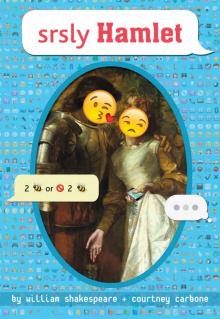 srsly Hamlet (OMG Shakespeare)
srsly Hamlet (OMG Shakespeare) The Merchant of Venice
The Merchant of Venice Richard III
Richard III Richard II
Richard II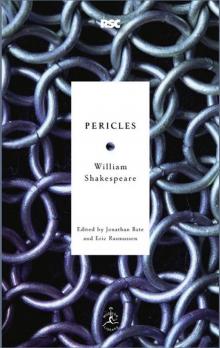 Pericles
Pericles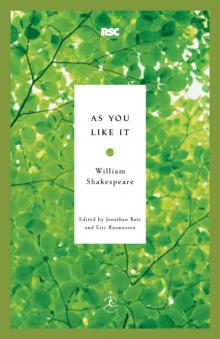 As You Like It
As You Like It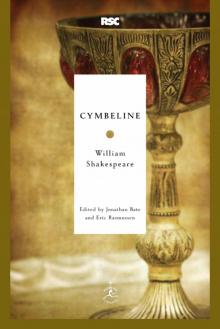 Cymbeline
Cymbeline Alls Wel that ends Well
Alls Wel that ends Well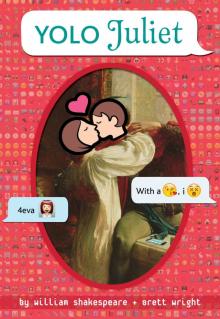 YOLO Juliet
YOLO Juliet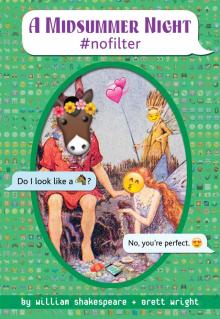 A Midsummer Night #nofilter
A Midsummer Night #nofilter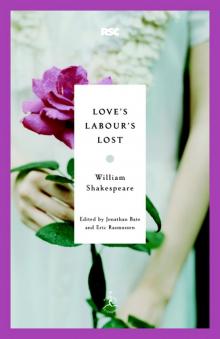 Love's Labour's Lost
Love's Labour's Lost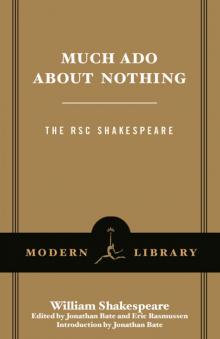 Much Ado About Nothing
Much Ado About Nothing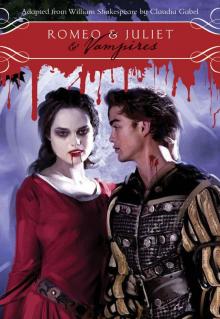 Romeo & Juliet & Vampires
Romeo & Juliet & Vampires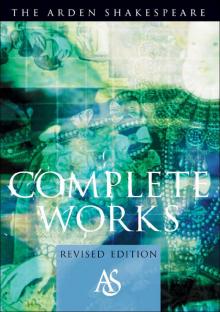 The Arden Shakespeare Complete Works
The Arden Shakespeare Complete Works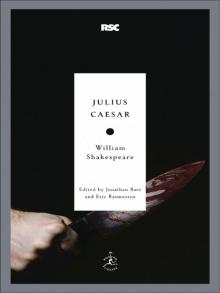 Julius Caesar
Julius Caesar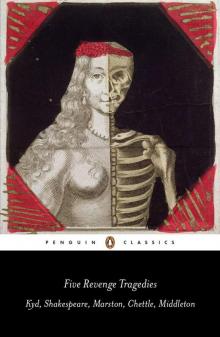 Five Revenge Tragedies: The Spanish Tragedy, Hamlet, Antonio's Revenge, The Tragedy of Hoffman, The Revenger's Tragedy (Penguin Classics)
Five Revenge Tragedies: The Spanish Tragedy, Hamlet, Antonio's Revenge, The Tragedy of Hoffman, The Revenger's Tragedy (Penguin Classics)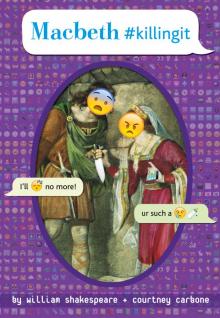 Macbeth #killingit
Macbeth #killingit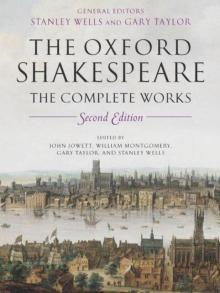 The Oxford Shakespeare: The Complete Works
The Oxford Shakespeare: The Complete Works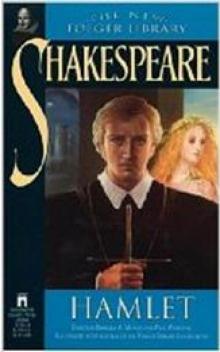 Hamlet, Prince of Denmark (Collins edition)
Hamlet, Prince of Denmark (Collins edition)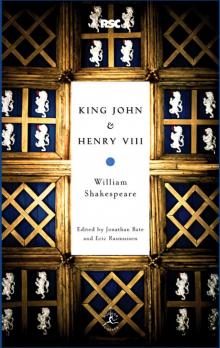 King John & Henry VIII
King John & Henry VIII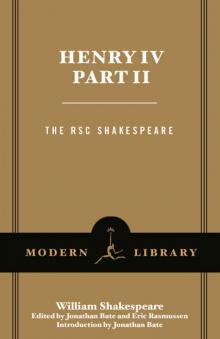 Henry IV, Part 2
Henry IV, Part 2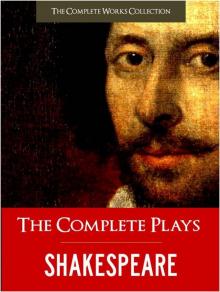 Complete Plays, The
Complete Plays, The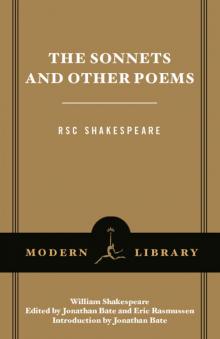 The Sonnets and Other Poems
The Sonnets and Other Poems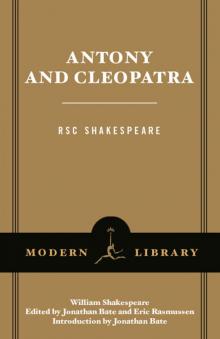 Antony and Cleopatra
Antony and Cleopatra Henry IV, Part 1
Henry IV, Part 1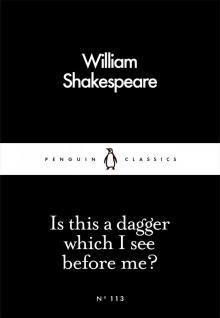 Is This a Dagger Which I See Before Me?
Is This a Dagger Which I See Before Me? The Complete Works of William Shakespeare In Plain and Simple English (Translated)
The Complete Works of William Shakespeare In Plain and Simple English (Translated)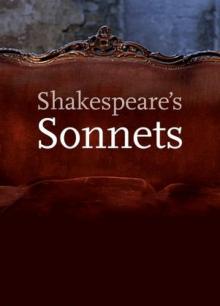 The Sonnets
The Sonnets